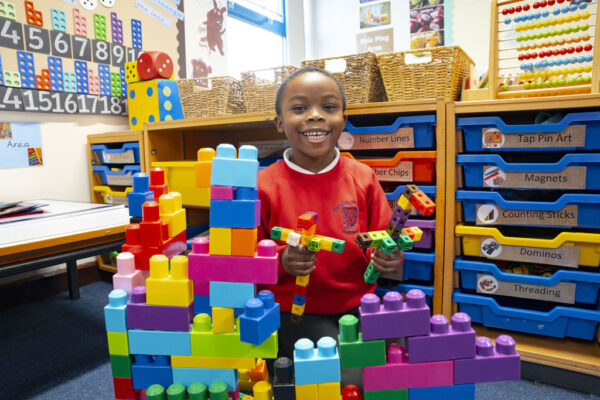
Intention
At Randlay Primary School and Nursery our Design and Technology curriculum aims to inspire pupils to be innovative and creative thinkers who have an appreciation for the product design cycle. As a school, we believe that every child has the right to be equipped with the knowledge and skills to be able to access the D & T curriculum at an aspirational level. Design and Technology lends itself to cross curricular links with a broad range of subjects, such as Science, Mathematics, Computing and Art, which we embrace through STEM based activities. We want pupils to develop the confidence to take risks, through drafting design concepts, modelling and testing and to be reflective learners who evaluate their work and the work of others. Through our Kapow scheme of work, we aim to build an awareness of the impact of design and technology on our lives and encourage pupils to become resourceful and enterprising citizens.
Implementation
Our D & T curriculum is taught through our Creative Curriculum and ensures effective coverage of the appropriate skills and knowledge, building on prior knowledge each time.
- Our Design and Technology curriculum is guided by the National Curriculum which focusses on the three main elements of the design cycle: design, make and evaluate.
- Each stage of the design process is underpinned by technical knowledge which encompasses the contextual, historical and technical understanding required for each strand.
- Children will be given opportunity to use quality tools and materials, appropriate to their age and the desired project outcome, enabling them to produce attractive and good quality end-products.
- Extra-curricular opportunities offered to the children to consolidate key skills and knowledge.
- Teachers will regularly assess pupils’ progress through observing their skills in design, making, and evaluating products.
- Teachers have a clear understanding of the objectives to be taught and use Kapow to support their subject knowledge which ensures the delivery of a highly effective D & T curriculum.
D and T in EYFS
In the Early Years Foundation Stage, children are taught to use and explore a range of techniques, tools and materials. They are provided with a range of opportunities to share their ideas, make and create, and explain what they have made.
D and T in KS1
In Key Stage 1, children are taught about the design cycle and use basic skills to design, make and evaluate. The children develop and explore these basic skills in mechanisms, structures, textiles and cooking and nutrition.
D and T in KS2
Building upon Key Stage 1, children use a wider range of tools and materials to continue to develop their designing and making skills. Children will evaluate their ideas and products, along with those of other inventors and designers. Children will become secure in the skills needed for the six key areas: mechanisms, structures, textiles, cooking and nutrition, electrical systems and the digital world.
How we support SEND in Design & Technology
- Adjusted learning materials
- Use of Assistive Technology
- Accessible workspaces
- Adaptive teaching
- Adaptations to tools and materials
- Personalised learning goals.
- Pre-teaching
Impact
- Children will become confident in Design and Technology and will know more and remember more.
- Children will leave school equipped with a range of skills to enable them to succeed in their secondary education.
- Children will be able to make connections between their D & T work and other areas of learning, such as Science, Maths and Art.
- Understand how to use and combine tools to carry out different processes for shaping, decorating and manufacturing products.
- Understand and apply the principles of healthy eating, diets, and recipes, including key processes, food groups and cooking equipment.
- Have appreciation for key individuals, inventions, and events in history and of today that impact our world.
- Self-evaluate and reflect on learning at different stages and identify areas to improve.
Knowledge and Skills